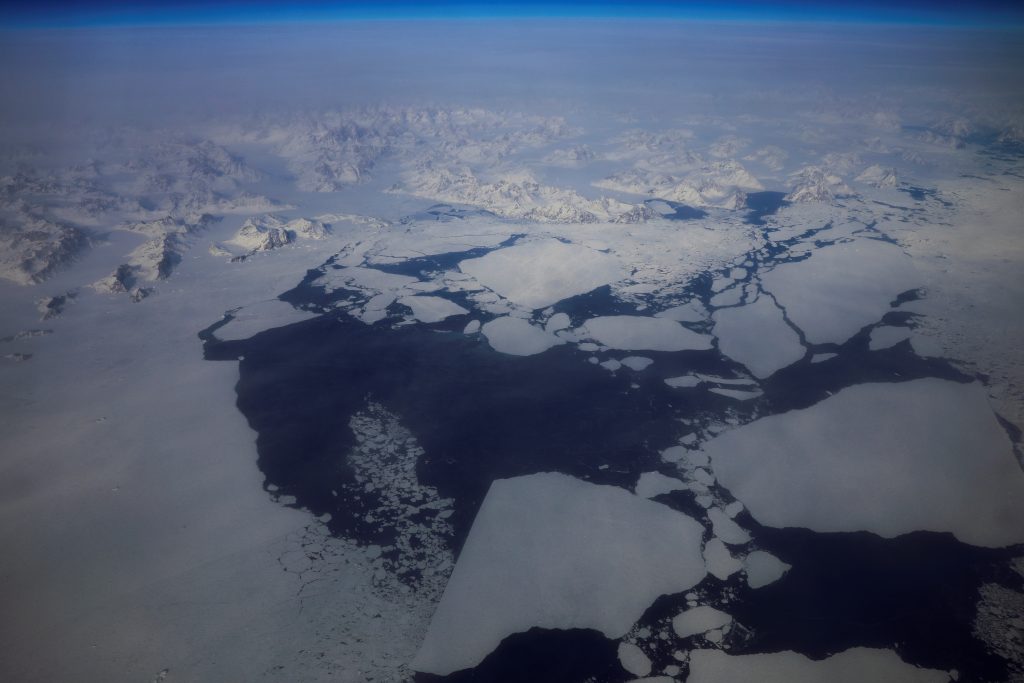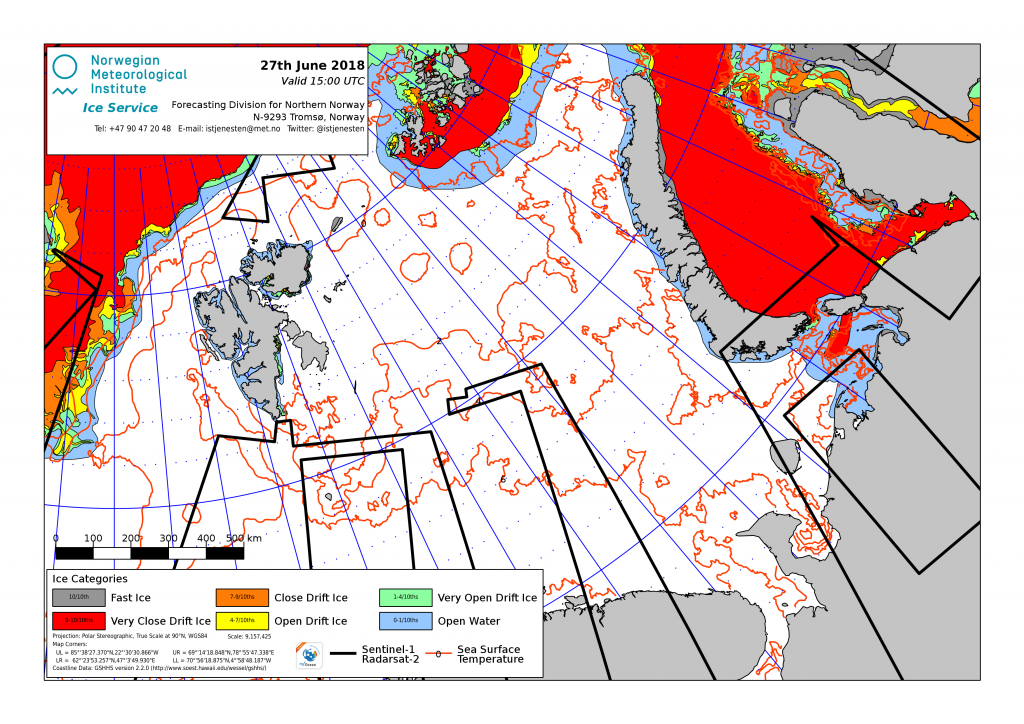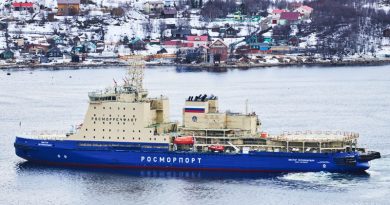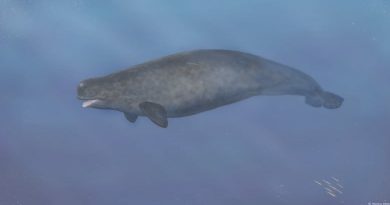Densely-packed ice makes navigation difficult in Russian Arctic

At this time of year, there has never before been such a complicated ice condition around Russia’s offshore Arctic oil platform “Prirazlomnaya”.
“It started in March-April and continues to this day”, says Gazprom Neft, the operator of the “Prirazlomnaya”. The platform is based in the Pechora Sea and is Russia’s only oil-producing installation in Arctic waters.
See the location of the Prirazlomnoye field on Google Maps:
The company, a subsidiary of natural gas company Gazprom, is now hiring a another icebreaker for clearing the waters around the platform. The 120-meter long “Vladivostok” is owned by state sea port company Rosmorport’s, built in 2014 and has a capacity of 17,5 MW.
“The engagement of the powerful icebreaker “Vladivostok” will provide faultless and secure loading of the shuttle tankers, safe supplies and emergency and rescue preparedness in the area around the platform”, the company says.
Data from vessel tracker system MarineTraffic show that on Tuesday there were two tankers and three support vessels around the “Prirazlomnaya”.
Still lots of ice in Russian Arctic waters
Ice conditions are difficult not only in the Pechora Sea, but also in the Kara Sea (east of the Pechora Sea) and the other parts of Russian Arctic waters. Ice mapping by the Russian Arctic and Antarctic Institute shows that almost the whole Kara Sea is full of very closed drift ice. The situation in the nearby Gulf of Ob is even more complicated.

State nuclear icebreaker company Rosatomflot last week informed that independent shipping in the area is “paralysed” and that LNG carriers and tankers are stuck. “We are back to the standards of the 1980s and 1990s”, said company representative Andrey Smirnov.
The Prirazlomnaya has been pumping oil from the Pechora Sea since late 2013. In 2017, production amounted to 2,6 million tons, and in 2018, production is planned to increase to 3,6 million tons and in 2020 – five million tons.
The field holds a total of 70 million tons of oil. Extracted oil is shipped by ice-class tankers to the “Umba”, a 300,000 ton tanker located in the Kola Bay, near the city center of Murmansk. Since the Prirazlomnoye came into production late 2013, a total of 5,9 million tons of oil has been shipped from the production site to Murmansk.
Related stories from around the North:
Canada: Canada ill-prepared for Arctic shipping boom, G7 sustainability summit hears, Eye on the Arctic
China: Qingdao plays pivotal role in China’s Arctic strategy, Cryopolitics Blog
Finland: Finnish president demands Arctic Summit to stop dangerous black carbon emissions, Yle News
Norway: Norway grants drilling rights closer to protected Arctic waters, The Independent Barents Observer
Russia: Chinese bank invests in Russia’s Northern Sea Route, The Independent Barents Observer
Sweden: Sweden breaks ground on test plant for fossil-free steel production, The Independent Barents Observer
United States: World maritime body approves first Arctic ship routing measures, Radio Canada International



